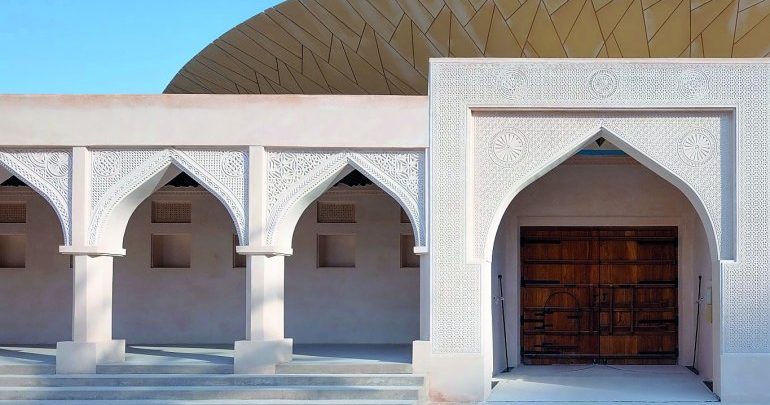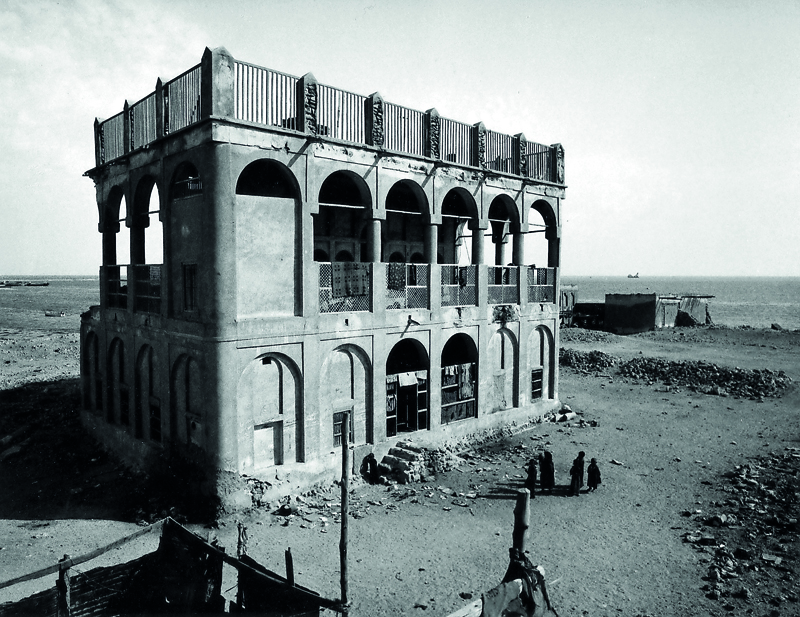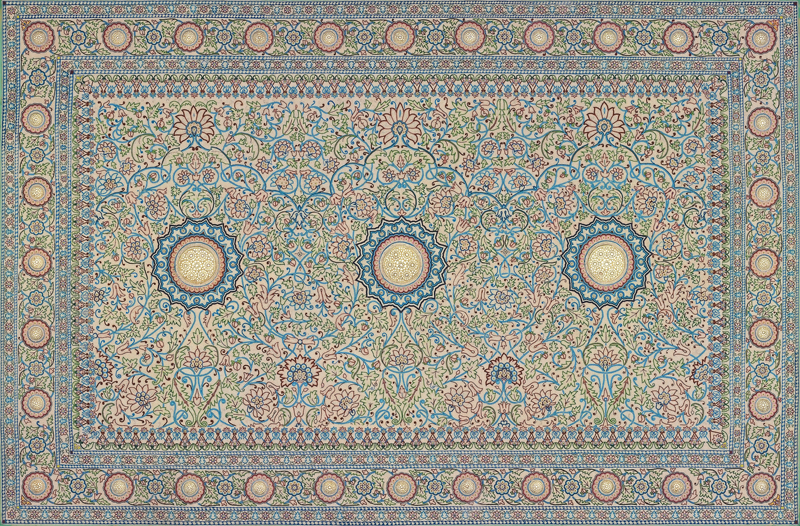
Qatar Museums reveals conservation efforts in the making of NMoQ
«متاحف قطر» تكشف تفاصيل عمليات ترميم مقتنيات متحف قطر الوطني
Spectacular artefacts await visitors at National Museum of Qatar
Qatar Museums (QM) has revealed details of its expansive project of conserving and restoring the objects and artefacts that contribute to the immersive experience of National Museum of Qatar (NMoQ) ahead of its opening on March 28.
The museum tells its sweeping story in three chapters — Beginnings, Life in Qatar, and Building the Nation — presented in eleven permanent galleries. Each gallery is an encompassing environment, which tells its part of the narrative through a creative combination of elements such as music, storytelling, archival images, oral histories and evocative aromas. Designed as distinctive experiences, these environmental galleries also contextualise an impressive array of archaeological and heritage objects, manuscripts, documents, photographs, jewellery, and costumes.
Dr Haya Al Thani, Director of Curatorial Affairs at NMoQ, said: “We have worked with teams of experts from Qatar and around the world to restore, protect and preserve each of the objects at the National Museum that help tell the overarching story of Qatar, its people and our place in the world. Although the National Museum focuses on creating an immersive experience using a variety of techniques, authentic objects are indispensable for connecting visitors to Qatar’s past. We have worked painstakingly to bring them back to life.”
The largest and most impressive of these authentic artefacts is the building that housed the original National Museum, and that now sits at the heart of the new NMoQ: the Palace of Sheikh Abdullah bin Jassim bin Mohamed Al Thani. QM fully restored and protected the Palace before construction began on the new NMoQ.
One of Doha’s most recognisable landmarks, the Palace serves as a monument to a historic way of life in Qatar. It was restored and refurbished numerous times since it was built in 1906, which meant that the expert team for this new conservation project had to peel back the layers of previous work to unearth the splendour of the original design.
Another challenge was posed by the age of the Palace and its location so near to the shore, which makes it susceptible to cracking. To prevent further damage, architects placed concrete piles underneath to support the structure once the water table was removed. To fulfil this ambitious brief, Qatar Museums engaged specialists focusing on the development of sustainable building solutions using natural building materials.
From large-scale building restoration projects to artefact conservation, QM has worked with many local and international experts to preserve objects of historical significance using the latest techniques combined with knowledge and understanding of Qatar’s traditions.
A pearl merchant’s chest from the 19th century was block lifted from the excavation site at Al Zubarah, meaning it was taken from the ground with the surrounding soil due to the fragility of its condition. It will now be one of the highlighted pieces in the displays about Al Zubarah archaeological site.
Al Zubarah site yielded another object of great significance that will be on view at the NMoQ: Al Zubarah Quran, which is the oldest Quran created in Qatar and was written in Al Zubarah at the beginning of the 19th century by Ahmed bin Rashed bin Juma bin Helal Al Muraikhi. The final page of the Quran bears the location of Ahmed’s birth, which was the city of Al Zubarah, indicting the city’s importance in the development of religious scholarships at the time. The two-year-long restoration process on the Quran was overseen by QM’s team at the Museum of Islamic Art, who discovered that an older Quran had been used to create the cover for
Al Zubarah Quran, as one of the approved ways of utilizing older or damaged Qurans. A decision was taken to create “windows” on the cover to allow viewers to see the craftsmanship of the older Quran as well.
One of the most spectacular artefacts in the NMoQ collection, and a testament to the flourishing pearl-trade relations between the Indian subcontinent and the Arabian Gulf, is the Pearl Carpet of Baroda. Commissioned by the Maharaja of Baroda in 1865 to adorn the grave of the Prophet Mohammed (PBUH), the carpet has long been considered a remarkable work of art.
For a few years, an expert team of technicians has carefully restored the piece, which is made with more than 1.5 million Arabian Gulf pearls, as well as rubies, emeralds, sapphires and diamonds. The carpet will be displayed in the NMoQ permanent gallery called Pearls and Celebrations.
The visitor’s chronological journey through the NMoQ, which extends through more than 1.5km of experiences, will create opportunities to engage with these and other objects and learn about the role they play in telling Qatar’s story.
كشفت «متاحف قطر» بعض التفاصيل المتعلقة بعمليات حفظ وترميم المقتنيات والقطع الفنية التي تعكس ماضي وحاضر ومستقبل قطر في متحف قطر الوطني الجديد، في إطار الاستعدادات الجارية لافتتاحه يوم 28 مارس الحالي، ويروي المتحف قصته الكاملة عبر 3 فصول: أولها البدايات، ثم الحياة في قطر، وأخيراً بناء الأمة.
قالت الدكتورة هيا آل ثاني مديرة الشؤون المتحفية بمتحف قطر الوطني، في تصريح صحافي: «تعاونّا مع خبراء من قطر والعالم لترميم وحماية كل قطعة يحتويها المتحف الوطني، فكل قطعة تكتب سطراً في قصة قطر وشعبها ومكانتها بين الأمم، وبرغم استعانتنا بعدد من التقنيات الحديثة لصنع تجارب تفاعلية، تظل للمقتنيات الأصيلة أهميتها، فهي تمثل جزءاً لا يمكن الاستغناء عنه لربط زائري المعرض بماضي قطر، وقد بذلنا جهداً مضنياً حتى نعيد لها بريقها».
كما تعاونت «متاحف قطر» مع العديد من الخبراء المحليين والدوليين في مشاريع عدة، تنوعت بين ترميم المباني الضخمة والحفاظ على المقتنيات الأصيلة، حفاظاً على قيمتها التاريخية.
كما يعمل خبراء الحفظ على حماية الآثار المهمة التي يكتشفونها في المواقع الأثرية في قطر، ومن بين هذه الاكتشافات التي سيعرضها المتحف صندوق لحفظ اللؤلؤ يعود للقرن التاسع عشر، عُثر عليه في موقع تنقيب في الزبارة، وجرى استخراجه دون تخليصه من التربة المحيطة به بسبب هشاشته، وسوف يتم إلقاء الضوء على هذا الصندوق في المتحف ضمن القطع المميزة المتعلقة بموقع الزبارة الأثري.
ومن مقتنيات المتحف المتصلة بالزبارة أيضاً، أقدم نسخة من القرآن الكريم في قطر، والتي خطَّها أحمد بن راشد بن جمعة بن هلال المريخي في بداية القرن التاسع عشر في الزبارة، وتشير الصفحة الأخيرة من هذا المصحف إلى مكان ميلاد أحمد، وهو مدينة الزبارة، واستمرت عملية الترميم لعامين في متحف الفن الإسلامي تحت إشراف فريق من «متاحف قطر» الذي اكتشف وجود غلافين للمصحف، حيث اعتادوا قديماً على تغطية الغلاف القديم إذا تلف بغلاف جديد، وتم فتح مربع في الغلاف الأمامي ليتسنى للزوار رؤية الغلافين.
كما يحتوي المتحف أيضاً على سجادة بارودا الشهيرة المرصعة باللؤلؤ، والتي تعكس العلاقات المزدهرة بين بلدان شبه القارة الهندية والخليج العربي في تجارة اللؤلؤ، والتي أمر مهراجا ولاية بارودا بصنعها عام 1865 لتزيين قبر النبي الكريم محمد -صلى الله عليه وسلم-.
وخلال السنوات الماضية، قام فريق من الخبراء المتخصصين بترميم هذه السجادة بدقة متناهية، وتتكون السجادة من أكثر من 1.5 مليون لؤلؤة خليجية وياقوت وزمرد وصفير وماس، وستعرض السجادة في إحدى صالات العرض الدائمة بمتحف قطر الوطني.





